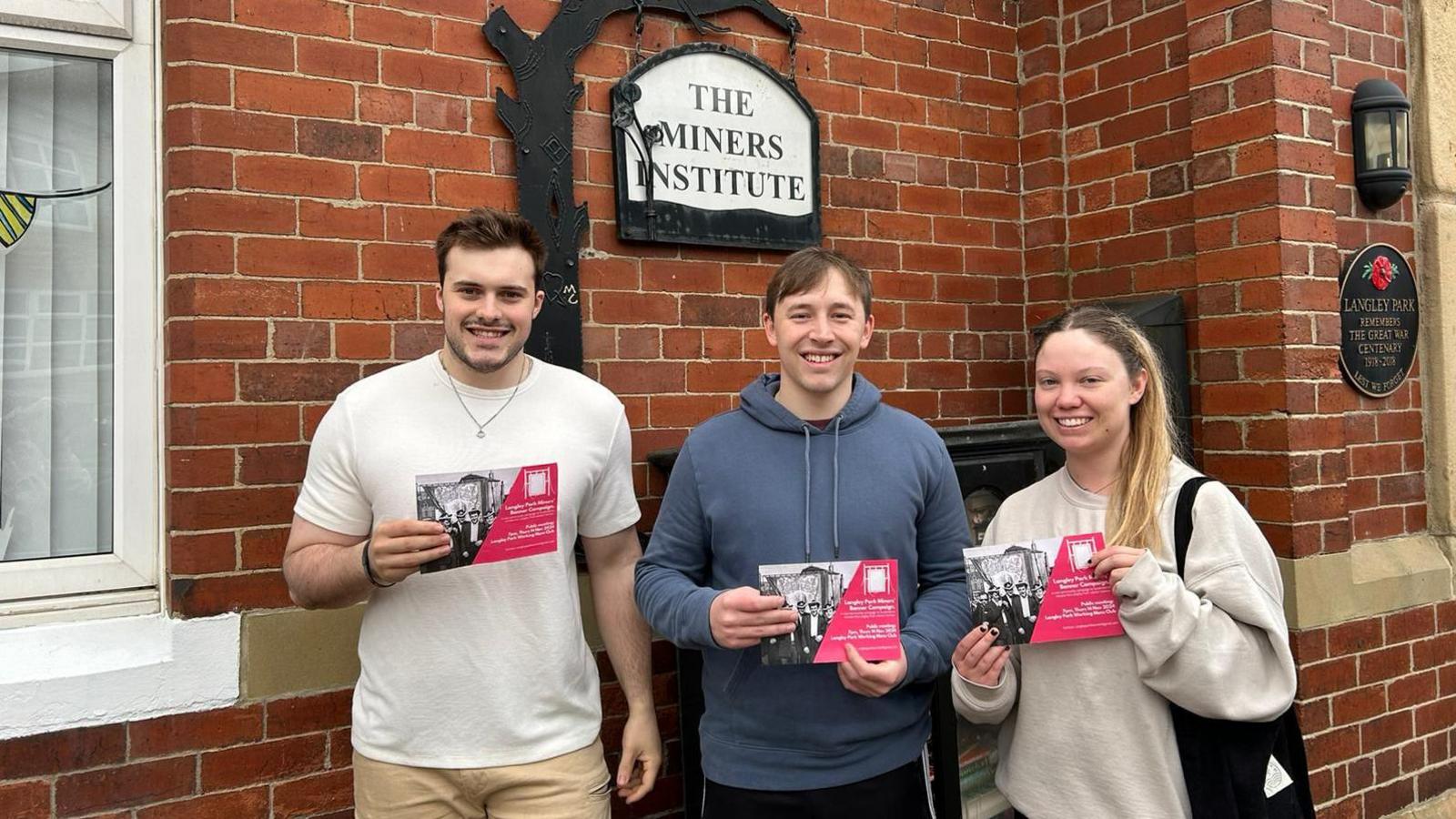How mining banners helped shape communities past and present
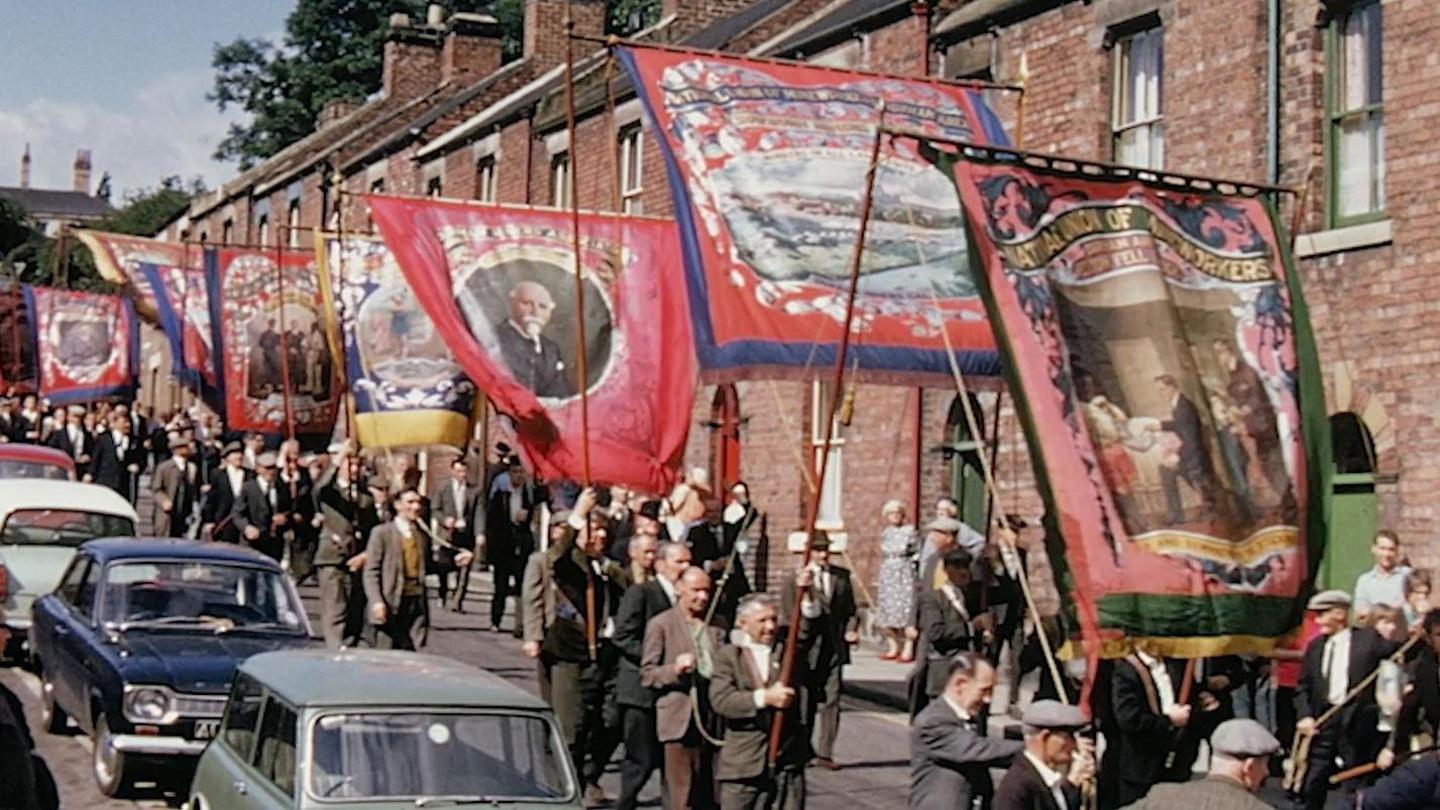
Banners were a powerful tool to get communities messages across during hard times
- Published
Since 1871, the Durham Miners' Gala has seen the streets of a city in north-east England transformed with displays of mining heritage, a parade of colourful silk banners representing community spirit and solidarity. But why were those banners so important - and why do they remain so for people today?
"Banners stem back to medieval battlefields, seen as a banner to rally around, to show your colours," says Jonathan Kindleysides, head of industry at Beamish Museum.
"At their most basic, they are silk and oils, paintings that represent values."
They are a way of getting a message across to a lot of people very quickly, he adds.
Coal mining was a crucial industry in England in the 19th Century, with nearly 250,000 men operating about 400 pits in the North East.
Many banners showcase that industrial history, with names of collieries, trade union branches and mottos proudly displayed.
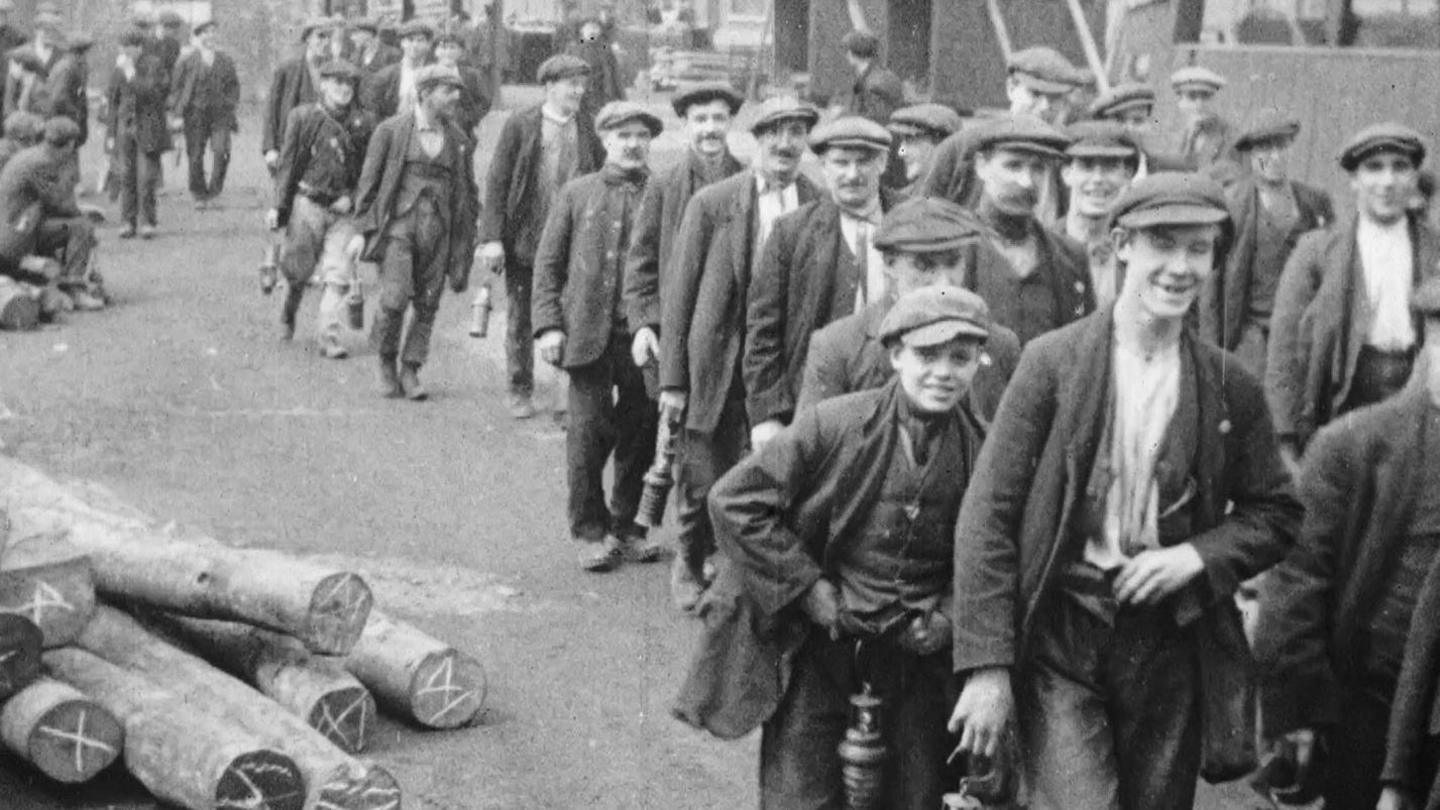
The coal mining industry employed thousands of men and boys across the North East
Mining was a dangerous job.
The Hartley Colliery mining accident in Northumberland in 1862 resulted in the deaths of 204 men and children, while an explosion at West Stanley Colliery, in County Durham, on 16 February 1909 claimed the lives of 168 men and boys.
Unions of collieries would fight for better working conditions, with banners often being at the forefront of rallies and marches.
It would take six men to march a banner, two pole bearers and four rope bearers.
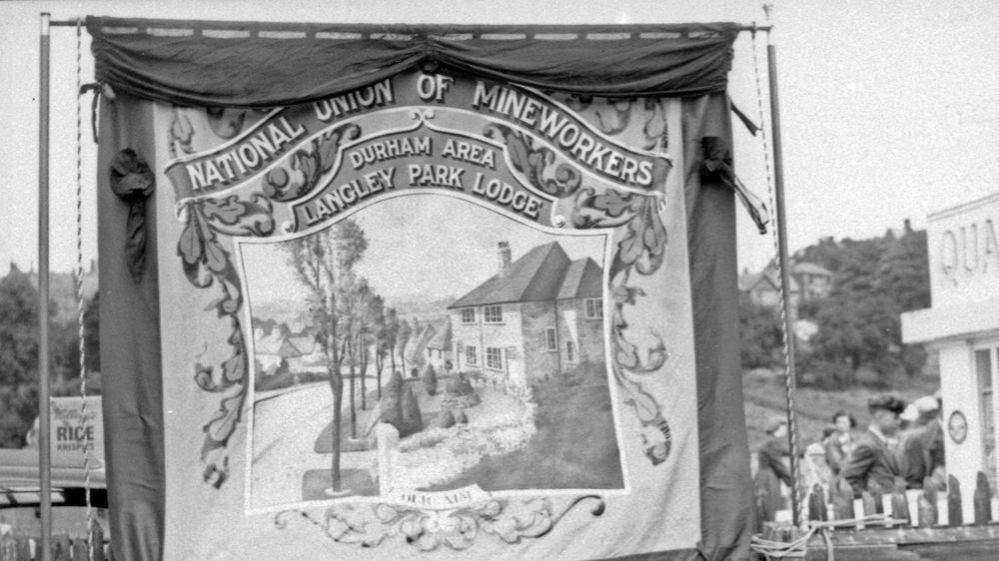
The Langley Park Lodge banner paraded at the 70th Durham Miners Gala on 18 July 1953
London-based George Tutill became the best known banner-making firm for trade union use.
He used his techniques as a fairground artist to produce bright, decorative banners, and to have one would have been seen as a mark of success due to the cost.
Later, banners were a common sight during the miners' strike of 1984-85, the biggest industrial dispute in post-war Britain, which saw workers protest against pit closures.
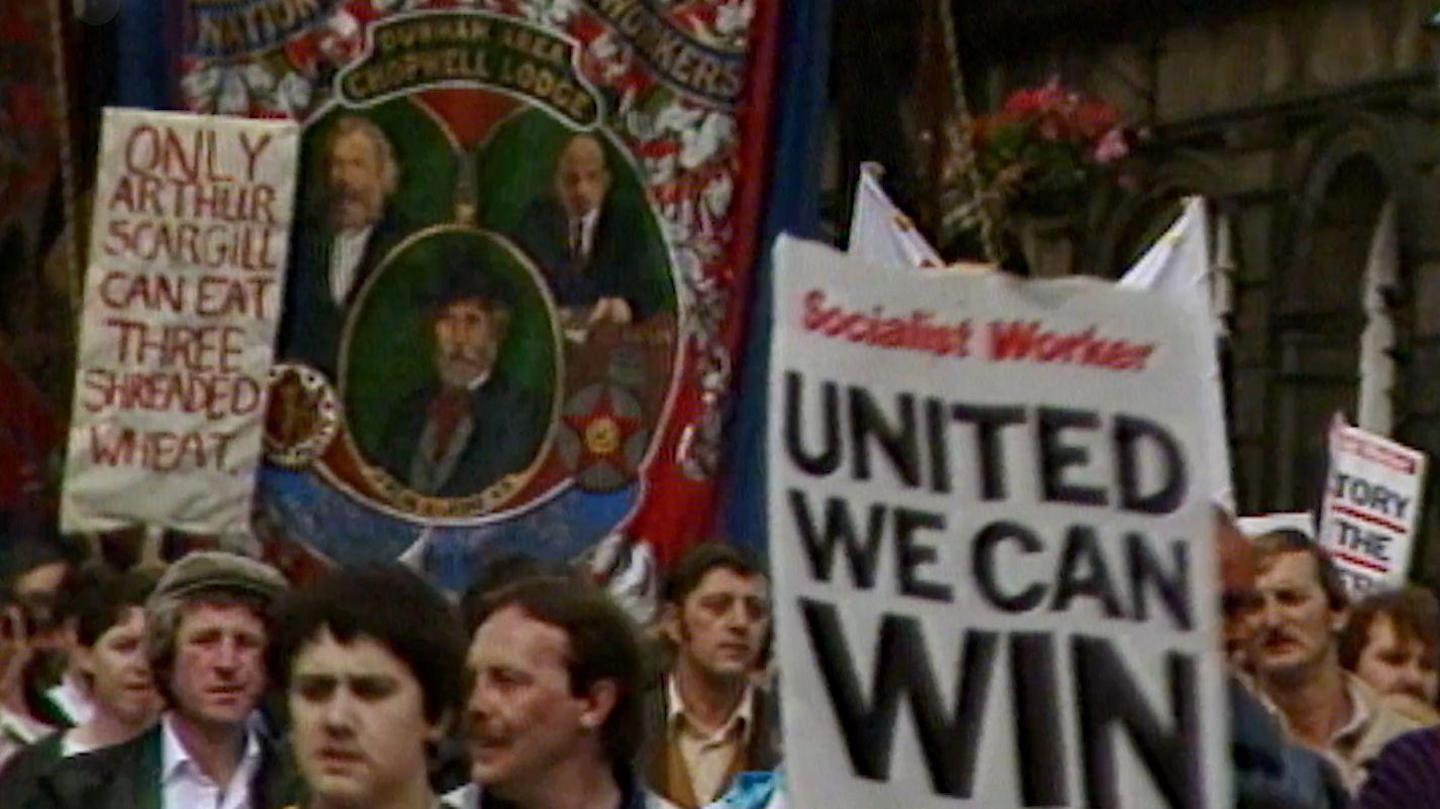
Banners played a huge part in mining strikes
Teesside University lecturer Dr Ben Lamb says the banners helped give people a voice.
He commissioned and co-produced In the Veins, a film about mining communities and their history, with the Yorkshire and North East Film Archive at York St John University.
"The unions and their use of the banner brought people together, and made them feel important because you had no access to the art world back then, so to have this banner produced for your union really helped bring people together," he said.
"They are fundamental to remembering the mining heritage and why we are all here, and why these towns that we live in exist."
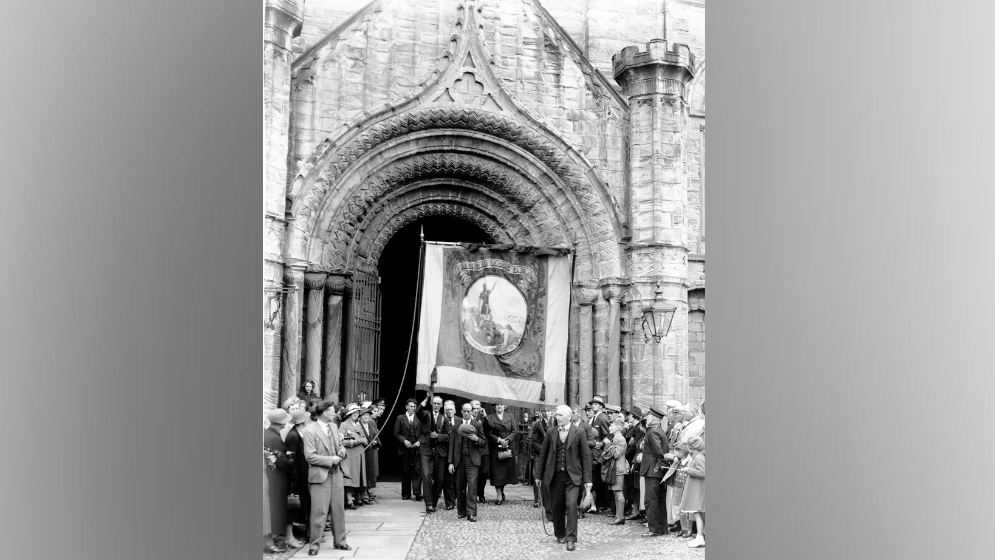
The Craghead banner leaving Durham Cathedral during the 1939 Durham Miners' Gala
Beamish Museum has 51 mining banners from across the North East in its collection.
Mr Kindleysides' favourite is from Lambton Lodge, which he says is "one of the oldest mining banners in existence in County Durham".
The 1885 banner depicts Scottish poet Robert Burns, because his poetry inspired many miners, he adds.
Woodhorn Museum in Northumberland also has a collection, along with Redhills, home to Miners' Gala organisers Durham Miners' Association (DMA).
The DMA brings banners from past and present to take part in a celebratory march every July.
The first parade took place in 1871, with banners from former pit villages being paraded through the city centre.
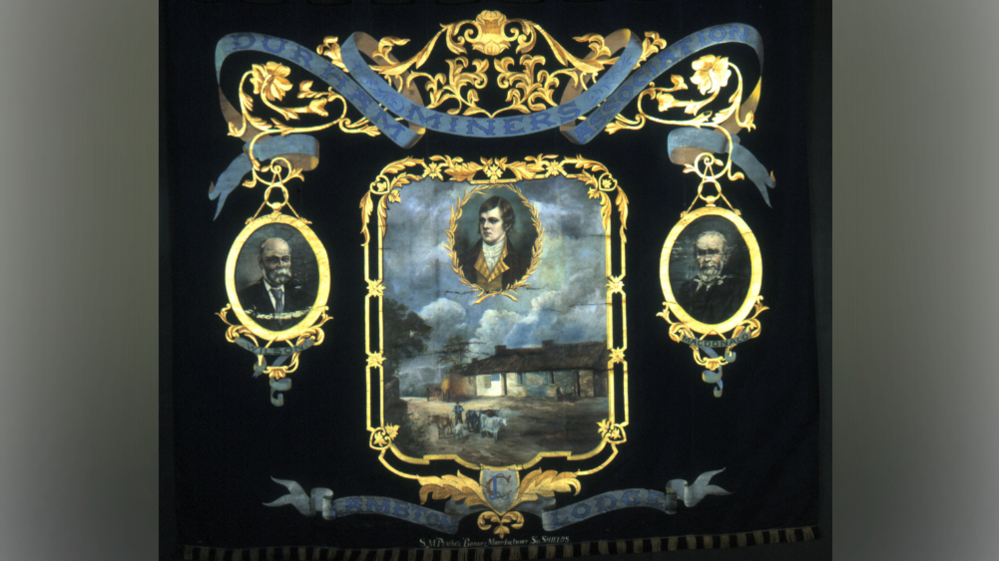
The 1885 banner for Lambton Lodge features poet Robert Burns, who was an inspiration to many union representatives and miners
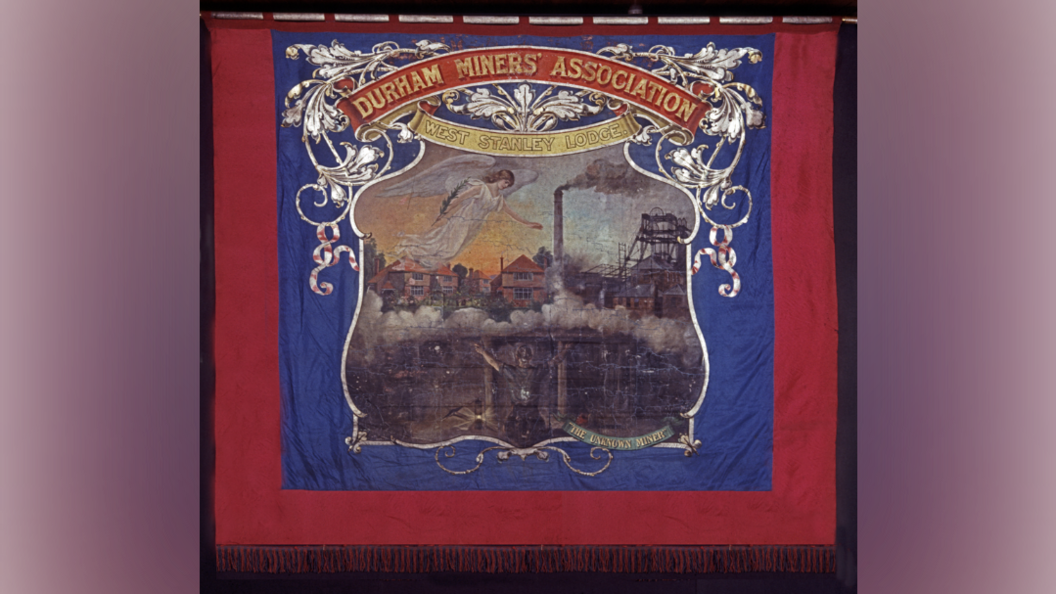
Other banners had a more biblical style, like this 1920s George Tutill-made banner for the West Stanley Lodge which pays tribute to the 1909 disaster at Burn's Pit
While many banners have been preserved and can be seen at the gala each year, many have also been lost.
"When a colliery closed, people left their jobs and went to go find new work and the banner may have been left behind or even thrown out, things weren't held on to back then," says Mr Kindleysides.
"In the last few years, there's been a big resurgence in the interest of banners.
"People want to preserve the history while there are still people here that can remember the collieries working, and people are proud."
One of those people is Jack Pringle, chair of Langley Park Miners' Banner Group, who began a campaign to remake his village's banner.
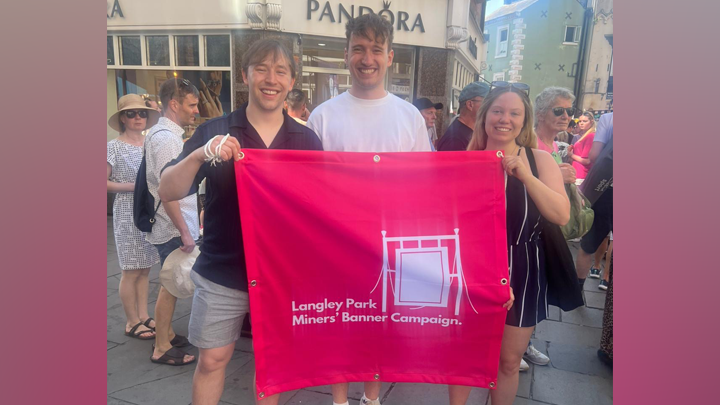
Jack Pringle (left) wants to connect Langley Park back to its industrial history
He attended the Miners' Gala in 2024 and found Langley Park was not represented, because its banner had been beyond repair for several years.
Langley Park Colliery, near Durham, closed on 31 October 1975 after producing coal for 102 years.
In total, 62 men were killed at the mine during its operation.
The campaign to remake the banner will include miners who worked at the colliery and their families.
Mr Pringle says mining is an area of history rich in working-class culture, but is "not highlighted anywhere near enough".
"I think it is important to highlight working-class history, which is a wider history."
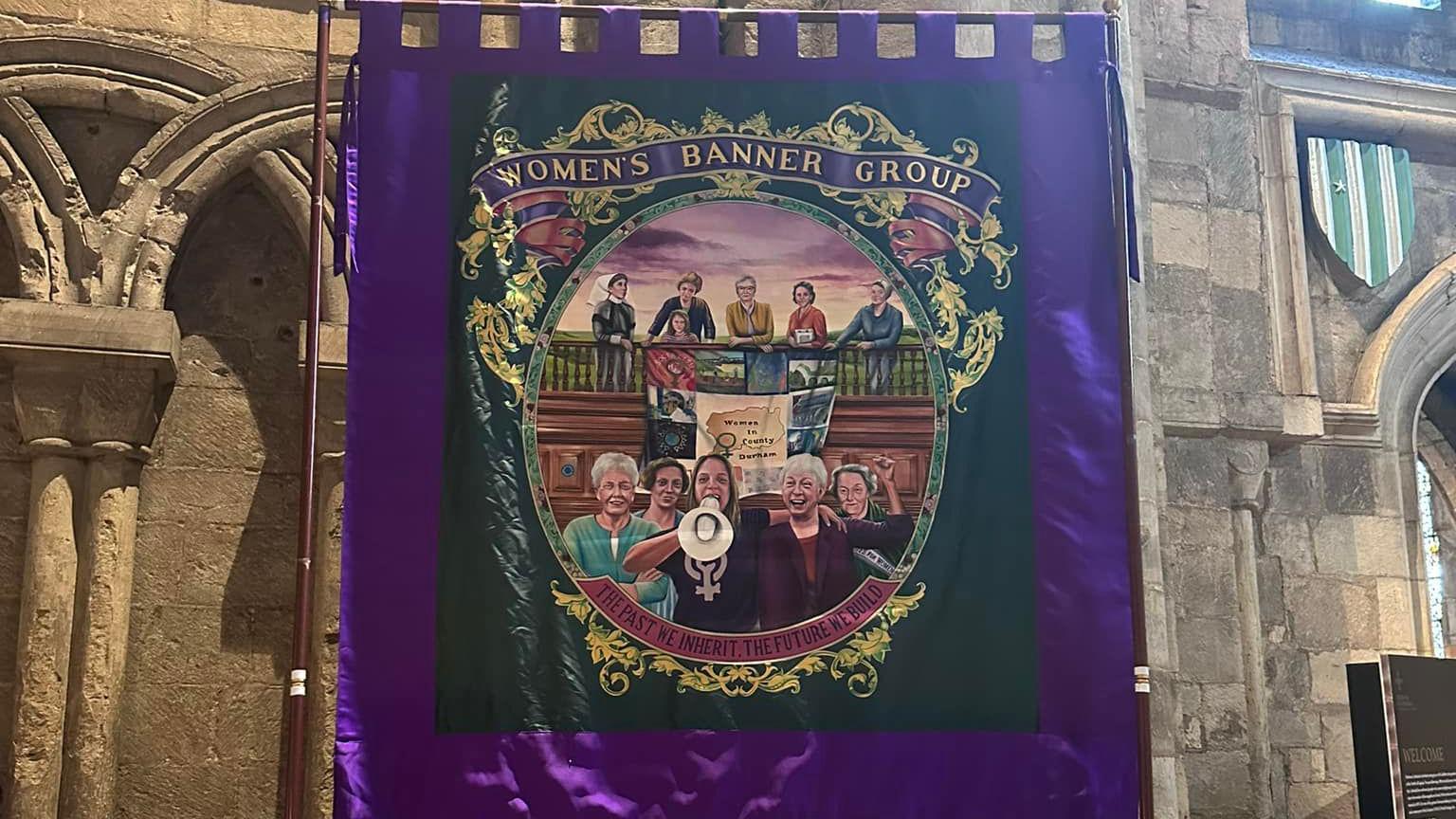
The Women's Banner Group banner depicts women's role in the mining strikes
Banners are also being used to highlight the important role of women in the mining community.
The Women's Banner Group was set up in 2017 by Laura Lee Daly and Lynn Gibson, whose family worked in the Durham pits.
Mrs Daly, who lives in Wingate, County Durham, says creating a banner with the Durham Banner Makers helped people remember the achievements of women during the miners' strike.
"It's an age-old story from the dawn of humanity, women get stuff done and then they go back to just keeping the cogs turning and they have never really been celebrated for it, especially during the miners' strike," she says.
"Women kept the men alive during the strikes, they did fundraisers, they opened free cafes for the striking miners."
She hopes the banner and the group help to celebrate women's roles during those hard times.
"The whole point of a banner is community.
"It is about a community coming together, and all of these banners represent that.
"If we don't teach children about banners and banner-making and the meaning behind it, then history is lost - as is the importance of community."
Follow BBC North East on X, external, Facebook, external, Nextdoor and Instagram, external.
Get in touch
Do you have a story suggestion for BBC North East & Cumbria?
Related topics
Related stories
- Published2 March 2024
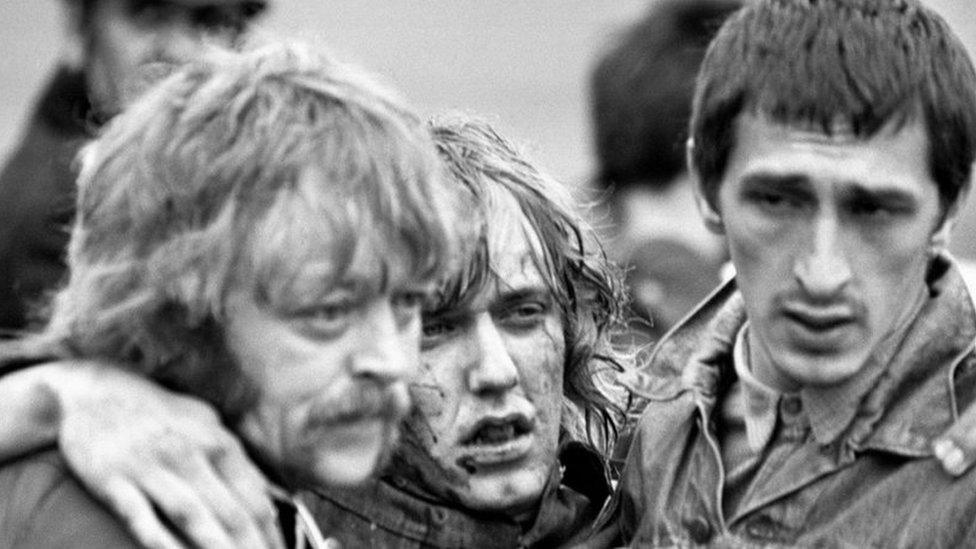
- Published19 October 2024
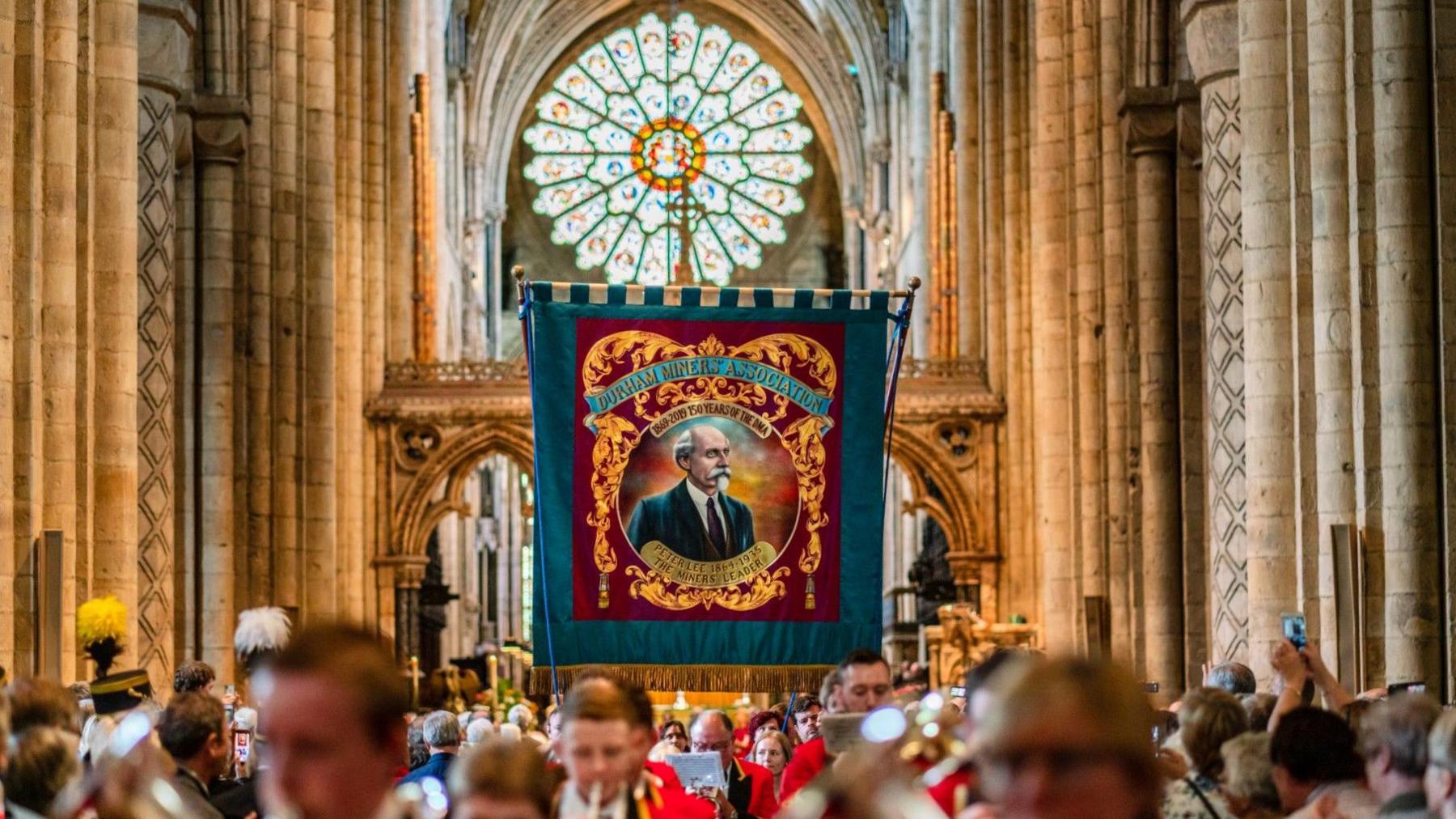
- Published1 March 2024
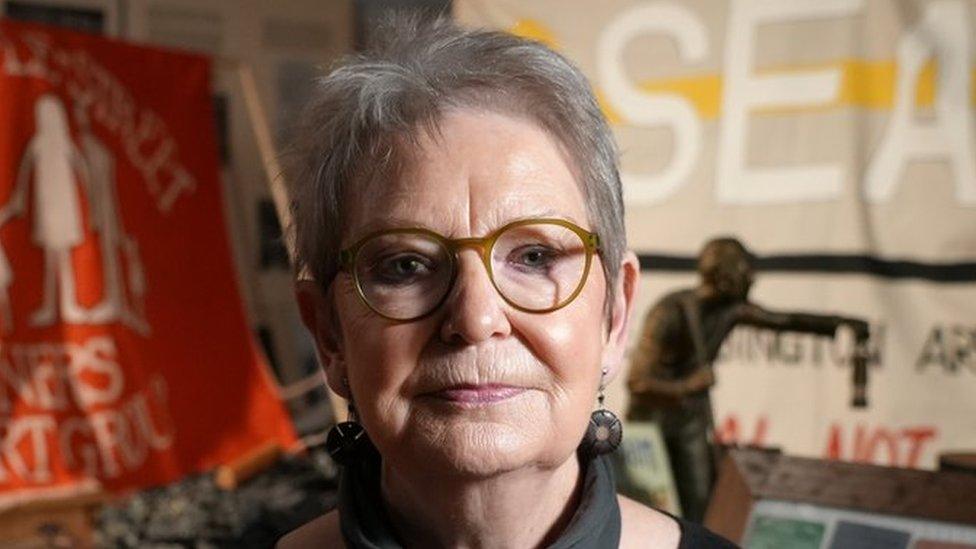
- Published7 April
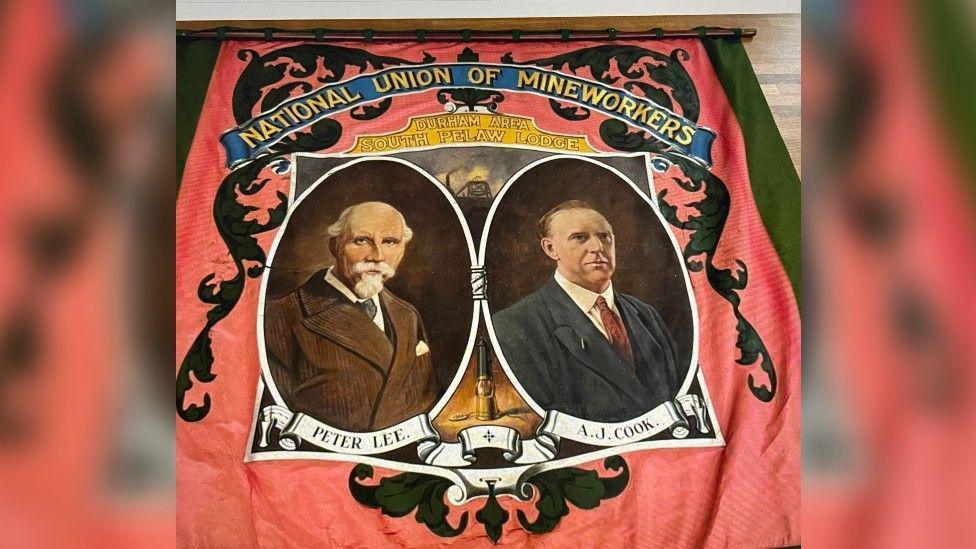
- Published9 November 2019
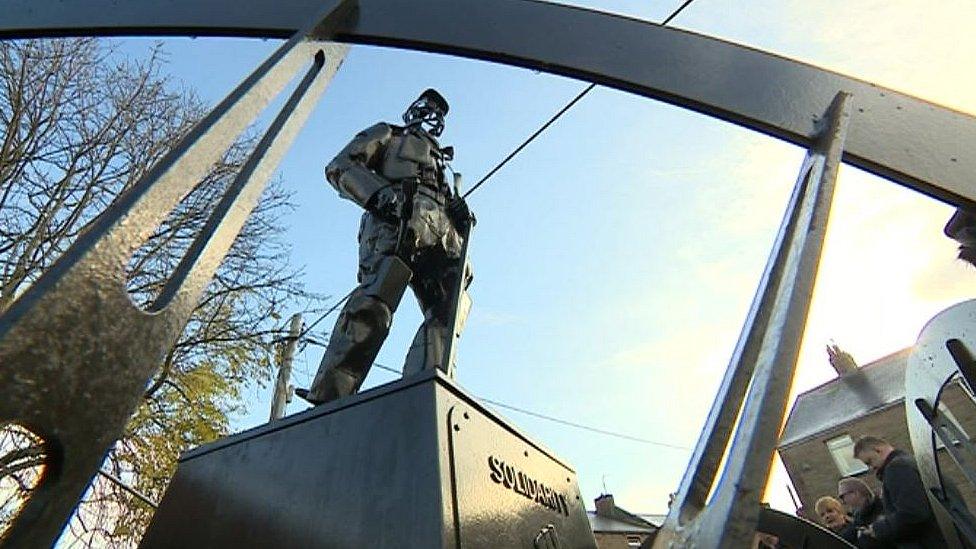
- Published3 November 2024
